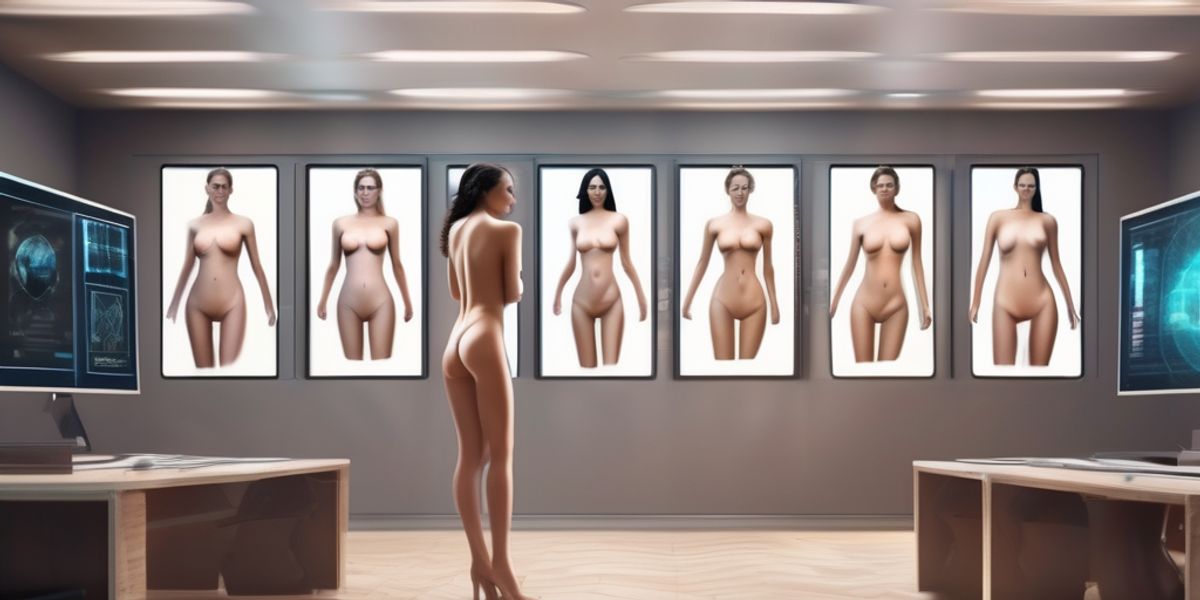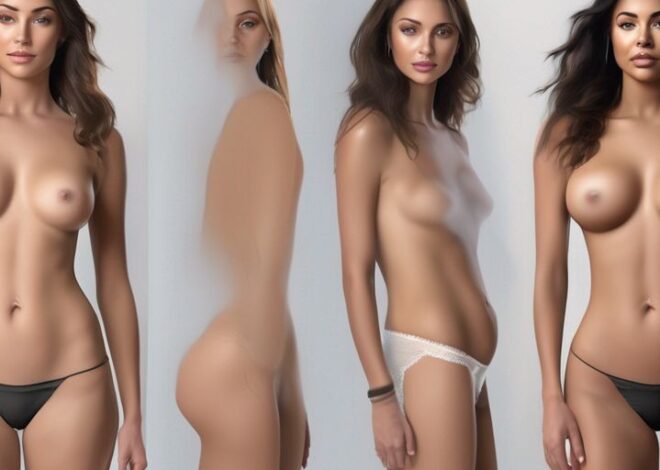
AI Undress Photos: The Technology, Legal, and Ethical Landscape
The development of AI-driven clothes removal technology, such as Nudify.Online, has sparked a significant debate across various spheres, encompassing technology, law, and ethics. As these tools become more sophisticated and widespread, understanding the implications and frameworks surrounding them is crucial. This article explores the multifaceted landscape of AI undress photos, delving into the technology itself, the legal and ethical considerations it raises, and the broader societal impacts.
Key Takeaways
- AI-driven clothes removal technologies like Nudify.Online are becoming more advanced, raising significant privacy and ethical concerns.
- There is a complex legal landscape that governs the use of AI undress photos, involving various national and international laws.
- Ethical considerations focus on issues of consent and the potential for misuse, highlighting the need for stringent ethical guidelines in AI development.
- Public perception is mixed, with media representation playing a crucial role in shaping societal views on such technologies.
- The future of AI in image processing promises new applications but also demands responsible development to address potential ethical and technological challenges.
Overview of AI-Driven Clothes Removal Technology

How AI Undress Technology Works
AI-driven clothes removal technology utilizes advanced machine learning algorithms to analyze and interpret images, effectively removing clothing from digital images of people. This technology leverages deep learning models that have been trained on vast datasets to recognize and manipulate human figures with high precision.
Key Players in the Market
The market for AI-driven clothes removal technology has seen significant growth, with key players like Nudify.Online leading the charge. These companies utilize cutting-edge technology to offer services that were unimaginable a few years ago.
Technological Advancements in 2024
The year 2024 has witnessed remarkable advancements in AI undress technology. Innovations include enhanced image processing algorithms and improved user interfaces, making the technology more accessible and efficient than ever before.
Legal Framework Governing AI Undress Photos

Current Laws and Regulations
The legal landscape for AI-driven clothes removal technologies like Nudify.Online is complex and varies by jurisdiction. In many countries, the use of such technologies is governed by general privacy laws and specific regulations aimed at digital content. Key legislation often includes criminal penalties for non-consensual distribution of intimate images.
International Legal Perspectives
Different countries have varying degrees of regulation concerning AI undress technologies. For instance, the EU has stringent data protection laws which could impact the operation of services like Nudify.Online. It’s crucial to understand the global legal context to navigate the potential legal pitfalls effectively.
Legal Cases and Precedents
Recent legal cases have set significant precedents that affect how AI undress technologies are viewed under the law. For example, courts have begun to treat the non-consensual creation of nude images by AI as equivalent to other forms of image-based sexual abuse.
Ethical Considerations of AI Undress Technology

Privacy Concerns
The use of AI to digitally remove clothing from images raises significant privacy concerns. Individuals may not be aware that their images are being used in this manner, leading to potential breaches of personal privacy.
Consent and AI
Consent is a critical issue in the deployment of AI undress technologies. Without explicit consent from the individuals depicted, the use of their images can be considered unethical and potentially illegal.
Impact on Society
The societal impact of deep nude technology is significant, raising urgent questions about privacy, consent, and the ethical use of AI. This technology can perpetuate harmful behaviors and attitudes towards privacy and personal boundaries, affecting societal norms and individual dignity.
Security Measures and Data Protection

Encryption and User Data
Strong encryption protocols are essential in safeguarding user data in AI undress technologies. These protocols ensure that personal images are encrypted from the point of upload to the processing and storage stages, minimizing the risk of unauthorized access.
Preventing Misuse of Technology
To prevent misuse, developers implement stringent access controls and real-time monitoring systems. These measures help in detecting and responding to unauthorized or malicious activities promptly.
Regulatory Compliance
Companies must adhere to international data protection laws, such as GDPR in Europe and CCPA in California, which dictate stringent guidelines on user data handling and privacy. Compliance ensures that operations are legally sound and ethically responsible.
Public Perception and Media Representation

Media Coverage of AI Undress Technology
The media has played a pivotal role in shaping the public’s understanding and attitudes towards AI undress technology. Major outlets have varied in their approach, ranging from critical analyses to sensational reporting. The coverage has significantly influenced public opinion, often sparking debates on the ethical implications of such technologies.
Public Opinion Trends
Public opinion on AI undress technology is deeply divided. Surveys indicate a split between concern for privacy and intrigue by the technological capabilities. This division is often influenced by demographic factors such as age and tech-savviness.
Influence of Social Media
Social media platforms have amplified the reach and impact of discussions surrounding AI undress technology. Viral posts and widespread sharing have made it a contentious topic online, leading to a broader dialogue about its implications on privacy and consent.
Future Prospects of AI in Image Processing

Potential New Applications
The evolution of AI in image processing promises to revolutionize various industries by introducing applications beyond simple image enhancement. These include real-time video editing, advanced healthcare imaging, and more immersive virtual reality experiences. The potential for AI to integrate with other technologies opens up a myriad of possibilities for future development.
Ethical AI Development
As AI technology advances, the emphasis on developing ethical AI systems becomes paramount. Ensuring that these technologies are used responsibly involves rigorous standards and frameworks that prioritize human rights and privacy. This focus on ethical development helps prevent misuse and promotes trust in AI applications.
Technological Limitations and Solutions
While AI in image processing has made significant strides, it still faces several challenges such as data bias and error rates. Solutions like improved algorithms, better data sets, and enhanced computational power are crucial for overcoming these obstacles. The ongoing research and collaboration among tech companies and academic institutions are vital for addressing these limitations and pushing the boundaries of what AI can achieve.
Conclusion
The advent of AI technologies like Nudify.Online, which can undress photos using advanced algorithms, presents a complex landscape that intertwines technological prowess with serious legal and ethical considerations. As we navigate this terrain, it is crucial to balance innovation with respect for privacy and human dignity. The potential for misuse and harm is significant, necessitating robust legal frameworks and ethical guidelines to govern the use of such technologies. Ultimately, the responsibility lies with both creators and regulators to ensure that advancements in AI contribute positively to society, without compromising individual rights.
Frequently Asked Questions
How does AI undress technology work?
AI undress technology uses advanced machine learning algorithms to digitally remove clothing from images of people. It analyzes the image’s data to predict what the person might look like without clothes, based on vast amounts of training data.
Is using AI to undress photos legal?
The legality of using AI to undress photos varies by jurisdiction. In many places, it is illegal if it infringes on individual privacy rights or constitutes non-consensual distribution of explicit images.
What are the ethical concerns with AI undress technology?
Ethical concerns include privacy violations, non-consensual image manipulation, and potential emotional harm to individuals whose images are processed without their consent.
What measures are in place to ensure the security of data in AI undress technologies?
Developers implement various security measures, such as encryption and strict access controls, to protect user data from unauthorized access and prevent misuse of the technology.
How does public perception affect the development and use of AI undress technology?
Public perception greatly influences the development and regulatory oversight of AI undress technology. Negative public opinion can lead to stricter regulations and even bans on such technologies.
What is Nudify.Online?
Nudify.Online is an advanced web-application launched in 2024 that uses sophisticated AI technology to remove clothes from images online, allowing users to see undressed versions of people in photos.



